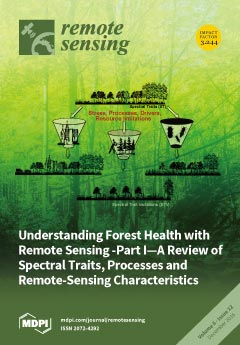Remote Sens., Volume 8, Issue 12 (December 2016) – 68 articles
Remote sensing is a crucial technique for recording spectral radiance or reflectance associated with forest characteristics. Distinct “spectral traits” (ST) and “spectral trait variations” (STV) over space and time (Figure 3) can serve as indicators of forest health and condition. They help us to understand, explain and predict organism occurrence and how organisms interact with different stressors, disturbances or resource limitations. Furthermore, ST and STV can be used to assess the types of drivers and processes that produce environmental change, thereby impacting forest health (Figure 6).
This paper describes the applicability, advantages and limitations of remote sensing for assessing and monitoring forest health within the context of taxonomic, structural and functional diversity. View this paper
- Issues are regarded as officially published after their release is announced to the table of contents alert mailing list.
- You may sign up for e-mail alerts to receive table of contents of newly released issues.
- PDF is the official format for papers published in both, html and pdf forms. To view the papers in pdf format, click on the "PDF Full-text" link, and use the free Adobe Reader to open them.





